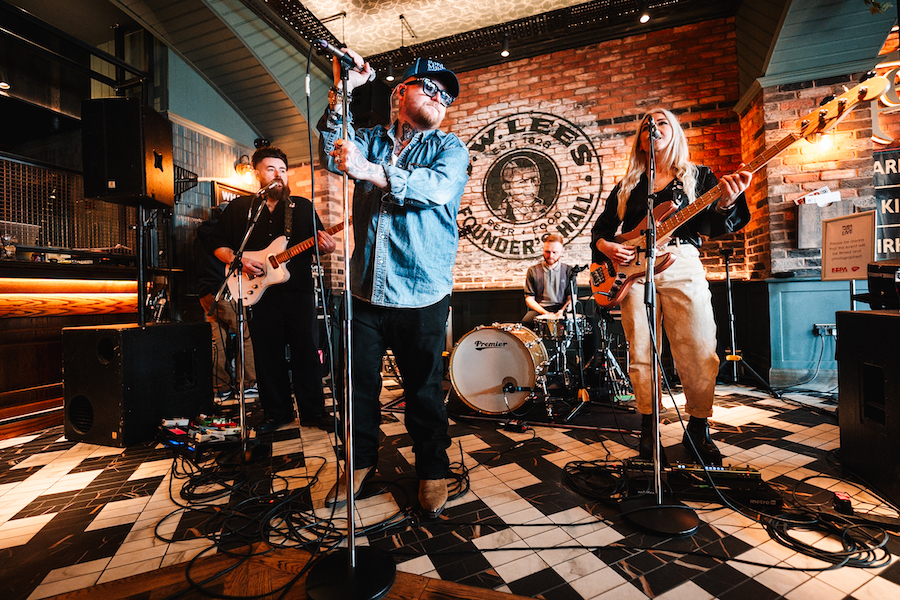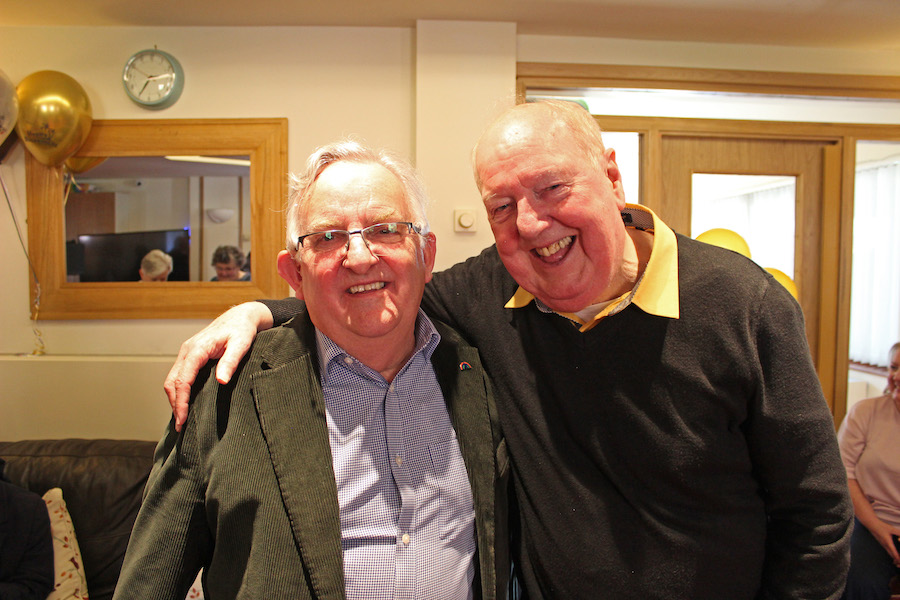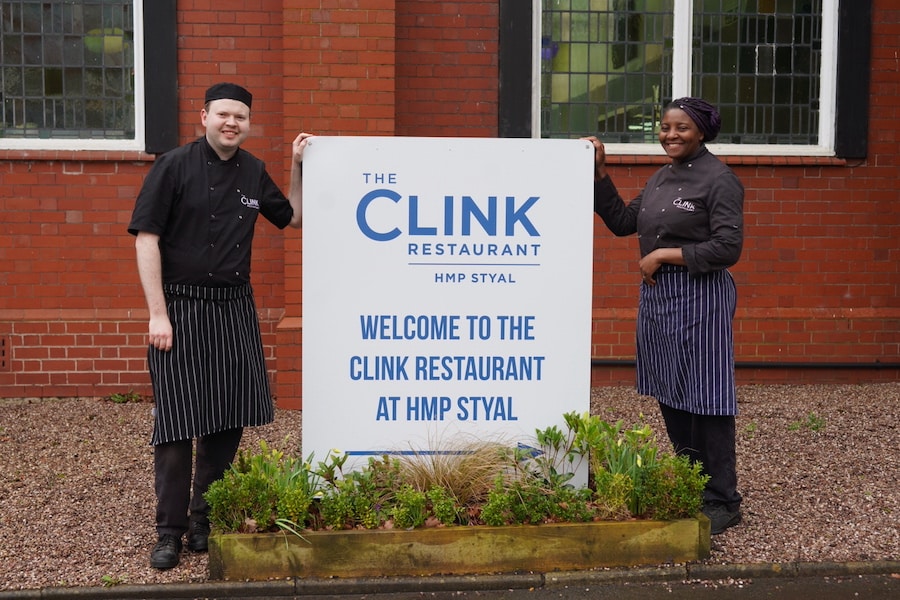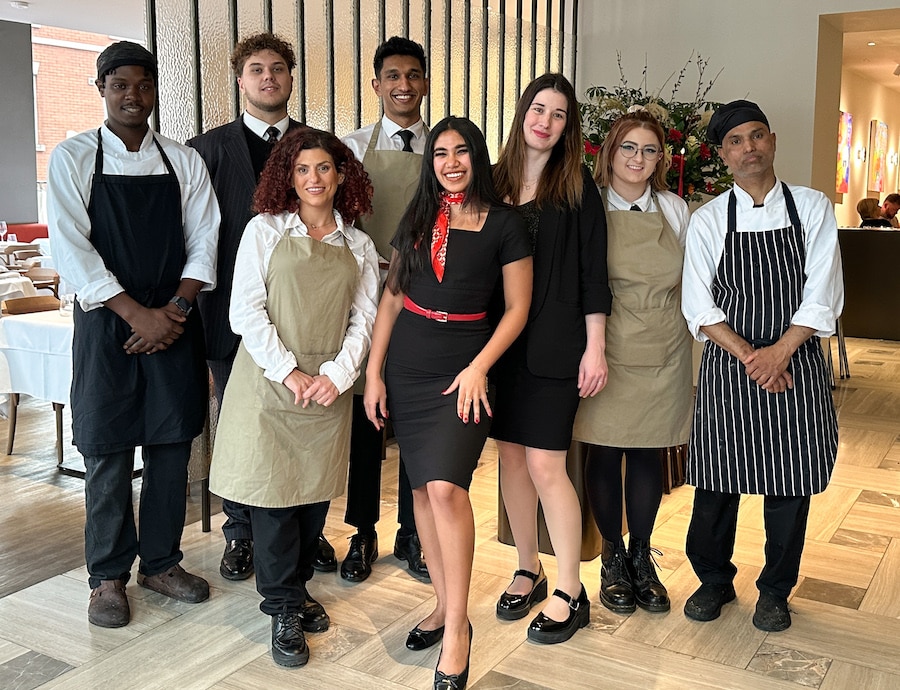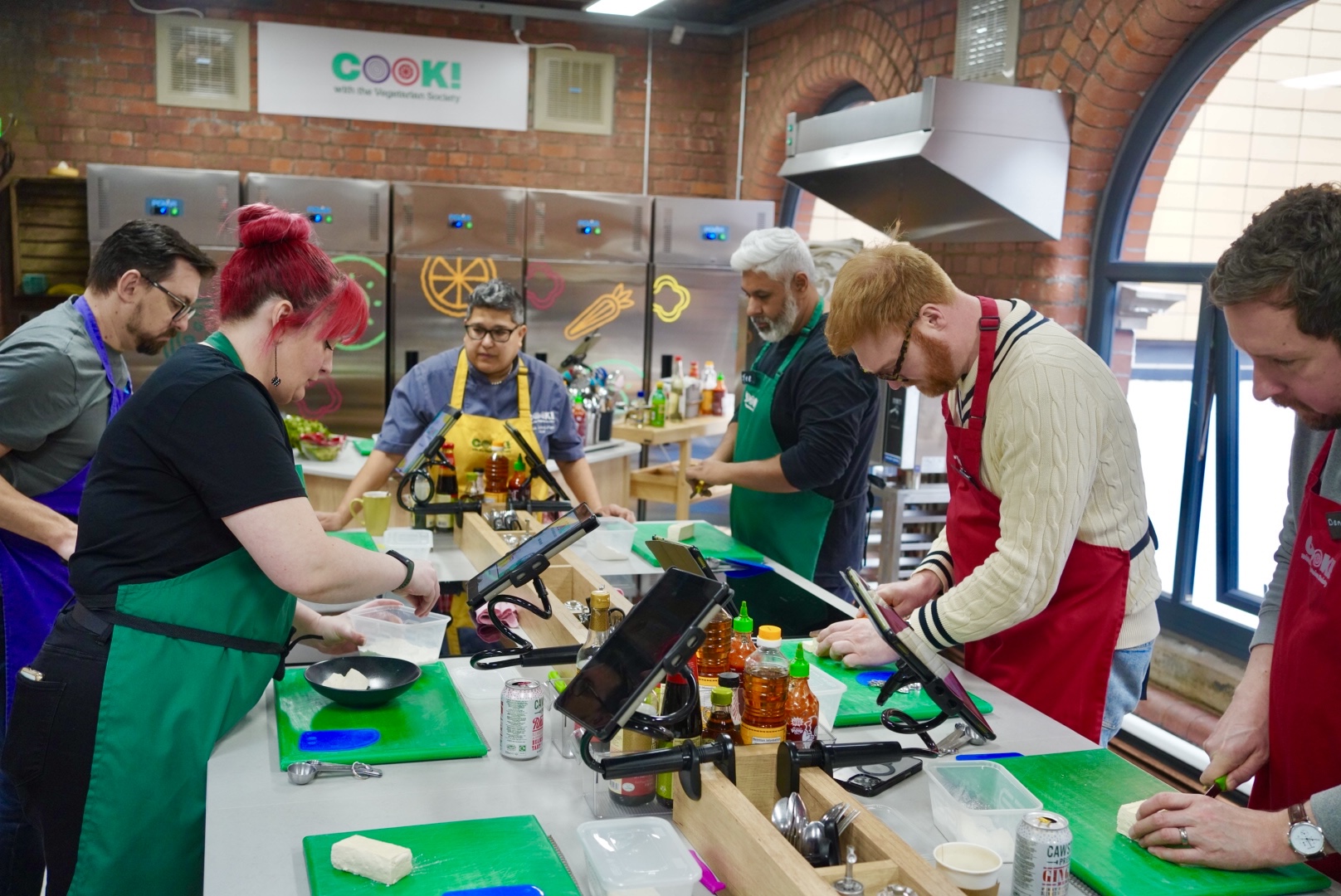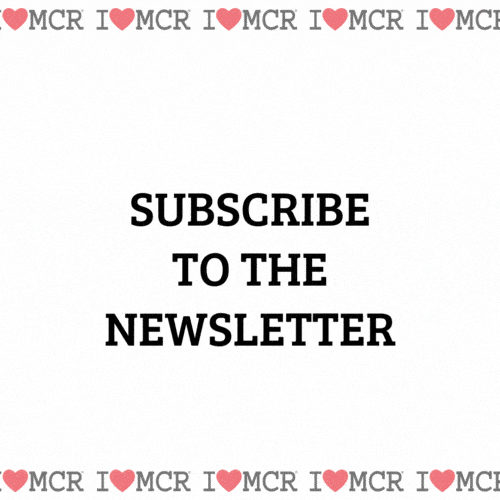Thousands of plants added to new urban sky park on Castlefield Viaduct
- Written by I Love MCR
- Last updated 3 years ago
- Attractions, City of Manchester, Featured
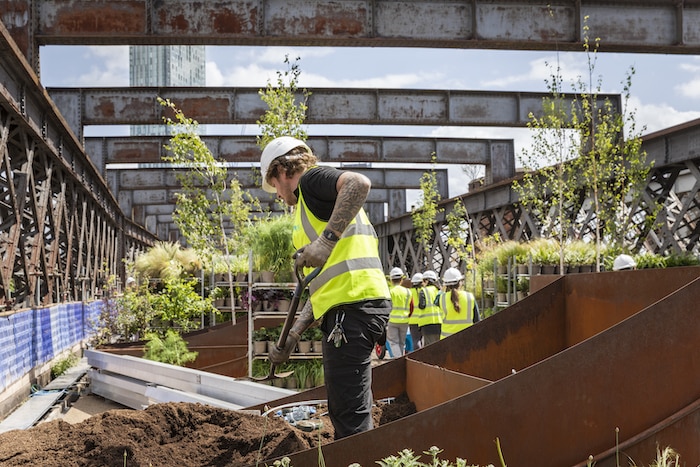
A new urban sky park on Manchester’s Castlefield Viaduct is springing into life with thousands of plants being added to the derelict structure.
National Trust gardening specialists and apprentices are busy planting 3,000 trees, flowers and shrubs on the viaduct as part of plans to ‘green’ the historic landmark and bring more nature to the Castlefield area of the city.
Due to open to the public in July, the Trust aims to turn the viaduct into a temporary urban park and capture visitors’ opinions to help determine the longer-term future of the Grade II listed structure.
Visitors will experience a variety of planting displays as they walk along the viaduct, moving through an area of native plants, shrubs and trees, to a ‘show garden’ setting at the end.
In addition to creating a place where people and nature meet, the new experience will also celebrate the industrial heritage of Castlefield.

The design of the planters gives a subtle nod to the industrial architecture of the viaduct which was built in 1892 by Heenan and Froude, the engineers who worked on Blackpool Tower.
The shape of the planters mirrors the curve of the viaduct and their width is the same as the railway tracks that once transported goods across the structure to the Great Northern Warehouse.
A section of the viaduct will be left untouched to provide a sense of how nature has reclaimed the space since the site closed in the late 1960s.
Plants take inspiration from what had already started to grow on the viaduct with shrubs, ferns and grasses providing a frame for more colourful seasonal planting.
Sections of the planting will mimic the diamond shape of the viaduct’s criss-cross steelwork, achieved through diagonal blossom hedges and other plants.
The original ballast surface is being incorporated into the scheme with 280 sandbags built up at varying heights to create planters which are being brought to life with Broom, fennel, grasses, ferns, euphorbias, sedums, fleabane, buddleja, teasle, liriope and Phlomis.
A canopy is also being created using 600 half-hardy annual climbers and others including hops and clematis which will tumble down.
Many of the plants making up the canopy have been grown at the National Trust’s Plant Conservation Centre, with other plants coming from nearby Trust property, Dunham Massey.
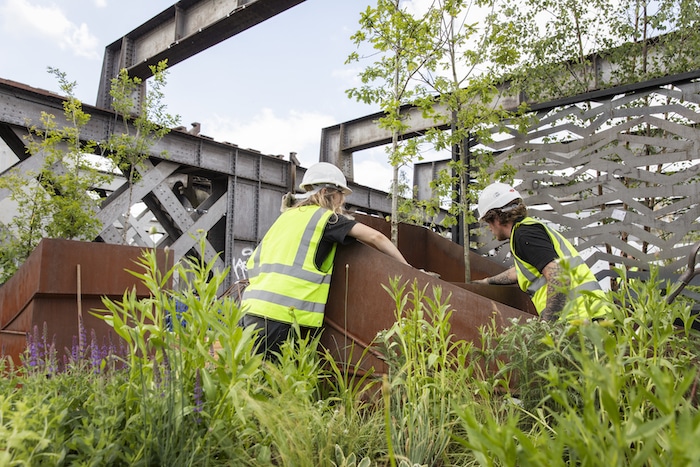
“We’ve reached an exciting stage in the project to transform Castlefield Viaduct into a green space for the people of Manchester,” said Pamela Smith, National Trust.
“Creating a garden on an industrial heritage structure such as this is untested territory for us and we’re intrigued to see how the plant life will take to its new surroundings.
“In addition to greening up a heritage structure, we’re celebrating Manchester’s history adding the county flower, cotton grass, to the viaduct as well as fern species once collected by Manchester suffragist and botanist, Lydia Becker.”
The garden team will be trying out new planting techniques, working with limited growing depths and untested growing conditions.
Due to weight limits on the structure, the National Trust is also using a specially commissioned, extra light peat-free compost in all its planting on the viaduct.
The planting will take a little while to establish and will develop through the seasons under the care of the Castlefield Gardener and volunteers.
“Castlefield Viaduct is unlike any other garden in the National Trust’s care and we’ll be keeping a close eye on the garden to see how it gets on over the next twelve months,” said Amy Watson, Castlefield Gardener at the National Trust.
“I’ll be working with a team of dedicated volunteers and apprentices to plant bulbs on a regular basis and adding to the planting to make sure there’s plenty to see throughout the year.
“We’ll also be working closely with our partners to see how their gardens are responding to their unique surroundings.”
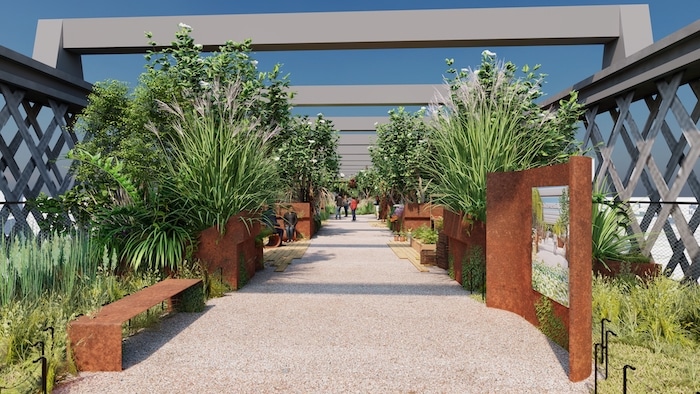
Four areas of the viaduct have been handed over to partner organisations to create their own unique gardens for visitors to enjoy.
Known as ‘partner plots’ these areas by Urban Wilderness, the Science and Industry Museum, City of Trees and Castlefield Forum are in the final stages of completion.
Urban Wilderness are working with Manchester based charity, 42nd Street, supporting young people who have suffered mental health challenges.
The ‘Garden of Possibilities’ features a geodesic dome and plants which are known for having positive effects on mental health including nettle, feverfew and lemon balm.
The Science and Industry Museum has filled its garden with plants that engage the senses and encourage visitors to take an active role exploring the local historical landscape.
The planting takes inspiration from the museum’s globally significant site, which was once a bustling station at the terminus of the Liverpool and Manchester Railway, the world’s first steam-powered intercity railroad.
From the vantage point of the viaduct, the roof tops of these historic buildings are visible.
Plumes of steam from the locomotives, which would have left trails across Manchester’s skyline, are represented with fluffy white plants such as sanguisorba albiflora.
Blue flowering plants such as lobelia are designed to cascade and flow, representing the essential relationship the first railways had with water, and decorative pipework and hand-cut trellis panels will display patterns to evoke the connectivity brought about by the rail networks.
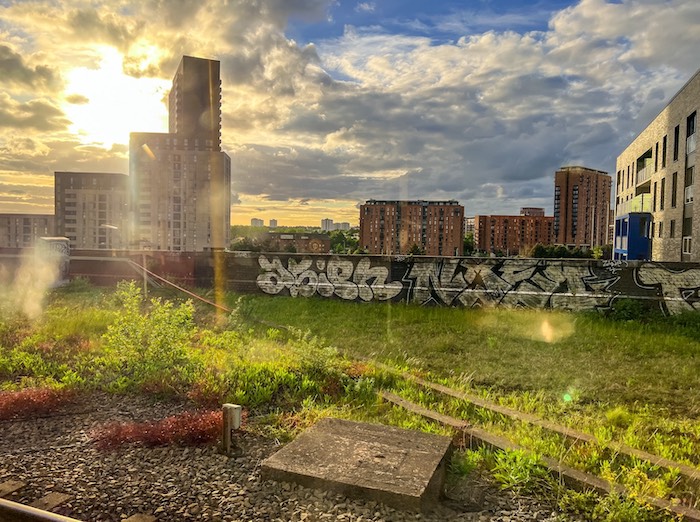
The theme of the City of Trees partner plot is ‘Trees – Past, Present and Future’.
It aims to showcase a variety of trees, shrubs and flowers that have been used throughout the Industrial Revolution, as well as displaying trees which are significant in Manchester today, and those that will play a role in the city’s response to climate change in the future.
Plant species include box, gooseberry, damson and comfrey amongst many others.
Castlefield Forum have worked with landscape architects BDP to create their garden.
The informal planting scheme is spread across two raised beds with plants of the same variety grouped together to provide a natural, layered effect.
Their chosen plants mirror the distinct features of Castlefield in both colour and scale.
Highlights include blue sages, Verbenas and purple Alliums reflect the steel-grey tones of the viaduct and water beneath, whilst orange yarrow, bold red daylilies and Heleniums represent the terracotta brick of the Victorian warehouses and exposed seams of sandstone upon which the Roman settlers constructed their fort in Castlefield in 79 AD.
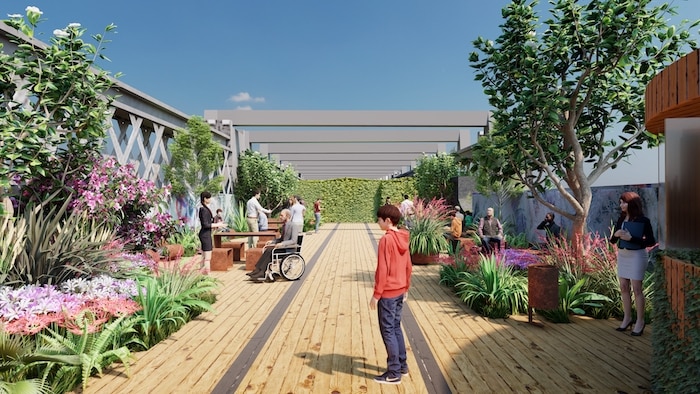
Working with the local Saul Hay Gallery, Castlefield Forum have also commissioned a unique artwork to form a central part of their area on the viaduct.
The temporary urban park opening this summer will see green space stretch halfway across the elevation of the viaduct.
During this time, visitors will have the opportunity to explore part of the structure and find out more about the viaduct’s heritage, the city’s long relationship with plants and trees and learn urban gardening tips.
The charity also aims to capture visitors’ opinions to help determine the longer term future of the Grade II listed structure.
When the first phase opens next month, 100 people a day will be able to visit.
Entry onto the structure will be free, but a booking system will be in place to help manage numbers. As part of the experience, visitors will also be able to join a guided walk on the viaduct.
- This article was last updated 3 years ago.
- It was first published on 16 June 2022 and is subject to be updated from time to time. Please refresh or return to see the latest version.
Did we miss something? Let us know: press@ilovemanchester.com
Want to be the first to receive all the latest news stories, what’s on and events from the heart of Manchester? Sign up here.
Manchester is a successful city, but many people suffer. I Love Manchester helps raise awareness and funds to help improve the lives and prospects of people across Greater Manchester – and we can’t do it without your help. So please support us with what you can so we can continue to spread the love. Thank you in advance!
An email you’ll love. Subscribe to our newsletter to get the latest news stories delivered direct to your inbox.
Got a story worth sharing?
What’s the story? We are all ears when it comes to positive news and inspiring stories. You can send story ideas to press@ilovemanchester.com
While we can’t guarantee to publish everything, we will always consider any enquiry or idea that promotes:
- Independent new openings
- Human interest
- Not-for-profit organisations
- Community Interest Companies (CiCs) and projects
- Charities and charitable initiatives
- Affordability and offers saving people over 20%
For anything else, don’t hesitate to get in touch with us about advertorials (from £350+VAT) and advertising opportunities: advertise@ilovemanchester.com
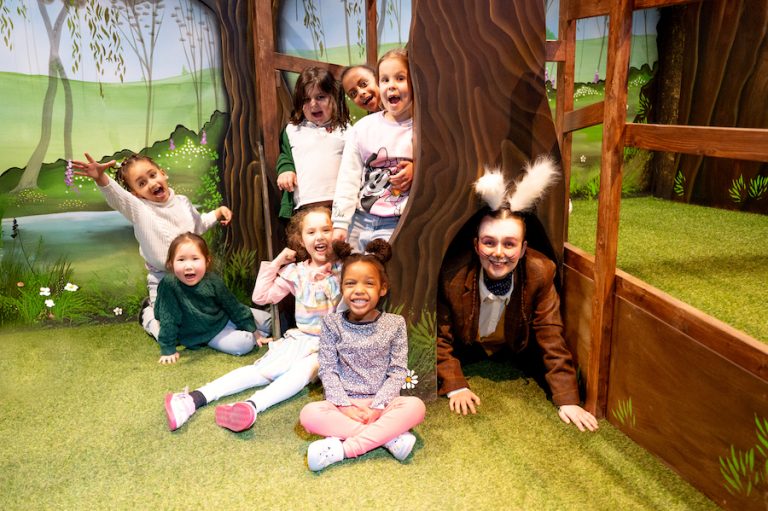
Head down the rabbit hole for Adventures in Wonderland with Z-arts
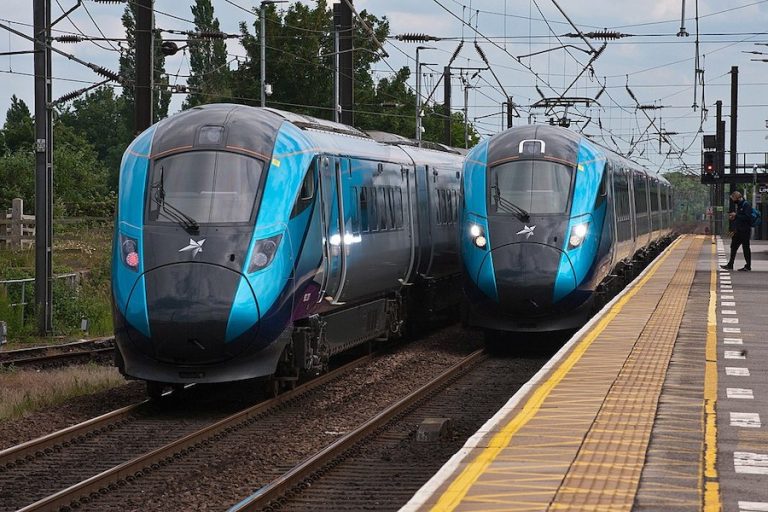
Major rail investment set to transform Manchester-Leeds commutes
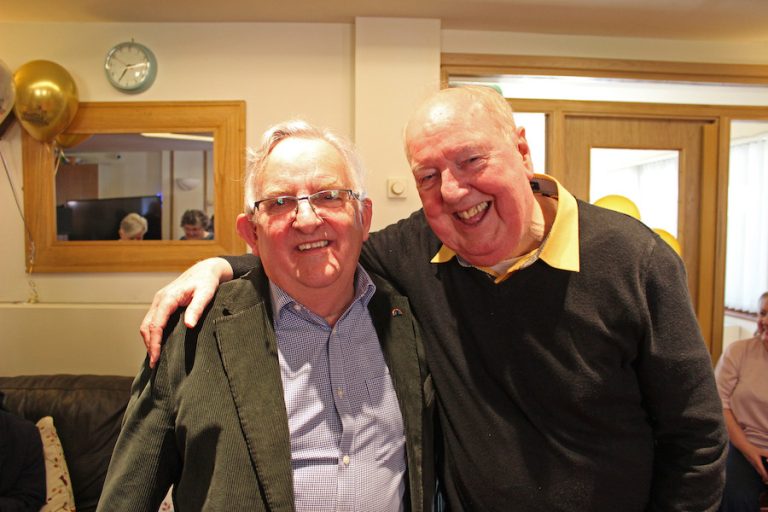
“His presence will be deeply missed” Children’s hospice bids farewell to their visionary CEO

Has Gordon Ramsay created Manchester’s ultimate bottomless brunch?

The Clink celebrates ten years of empowerment and second chances









